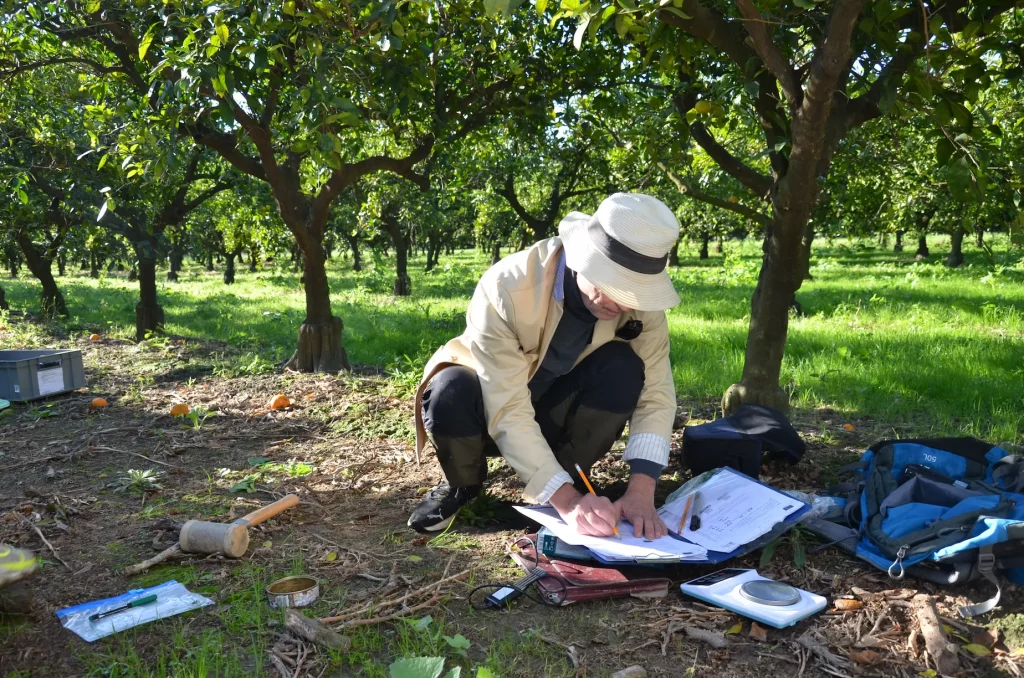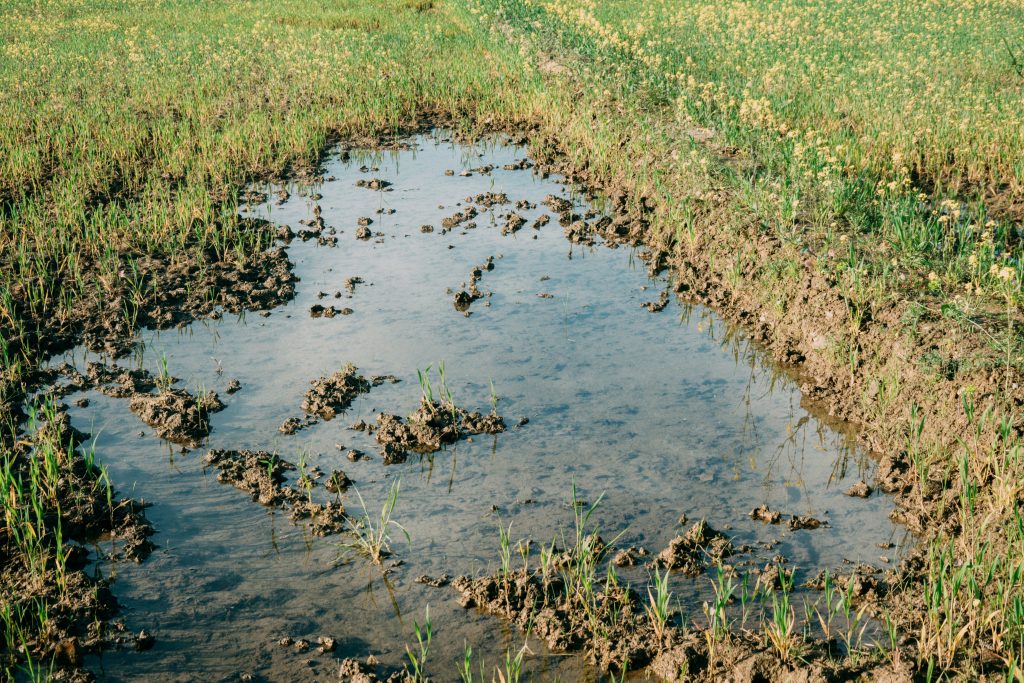In this blog, Fatemeh Hateffard and Thomas Gumbricht from Stockholm University tell us about the recent trip to the Swedish pilot site and the novel approaches to soil health analysis being tested there.
In August 2024, a team of seven scientists representing five partners (and countries) gathered at the Swedish pilot site – SITES Lönnstorp Research Station near Lomma in Skåne, southern Sweden – to test and evaluate novel in-situ methods for soil health.
The main reasoning for using the Lönnstorp pilot site within AI4SoilHealth has been to access their comprehensive field data for evaluating novel methods. The continuous spectral monitoring and seasonal drone spectral data is a valuable data source for researching temporal dynamics. Statistical regressions and machine learning modelling will be the principal methods used for evaluating the data.

Testing instant in field analysis tools
One well-established approach involves using light to determine chemical and physical compositions. State-of-the-art microelectronics, light-sensing technology, and Artificial Intelligence (AI) have led to the development of field spectrometers for in-situ soil analysis that can provide instant estimates of key soil properties. However, knowing the moisture content is essential for accurate results. To address this, soil “penetrometers” (steel-pinned probes) can now operate using the same power as mobile phones and field spectrometers, offering precise measurements of soil temperature, moisture, and salinity on the spot.

Old methods and new
Ion Selective Electrodes (ISE) and Ion Sensitive Field Effect Transistors (ISFET) are more mature technologies already used in laboratory settings, but these methods are also being adapted for field use with more robust and durable instruments capable of measuring soil pH at almost laboratory precision. Environmental DNA (eDNA) analysis extends soil analysis beyond chemical and physical properties, but this method is complex and requires specialized laboratories. Feeling like forensic specialists, we “swiped” the soil for samples.
Alternatively, analysing the enzymatic activity of key soil metabolic pathways is an option. The Swiss startup Digit-soil have developed a method that uses a prepared reaction plate and a small, portable desktop unit to analyse soil enzymatic activity in less than an hour. However, some classical sampling methods are still indispensable in this digital age. For example, soil cylinders are still needed to determine soil bulk density, and proper infiltration tests are required for hydraulic properties.
Implications for policymakers
This research will assist EU policymakers by providing advanced, real-time soil monitoring tools and methods. The use of various soil health indicators and AI-based analysis offers accurate, instant data on soil properties, enhancing the understanding of soil health. By combining these insights with data from other pilot sites involved in the project, we can create a comprehensive database, allowing policymakers to gain a thorough understanding of soil health across EU.
More information about the research station.
And more about the AI4SoilHealth pilot site.



